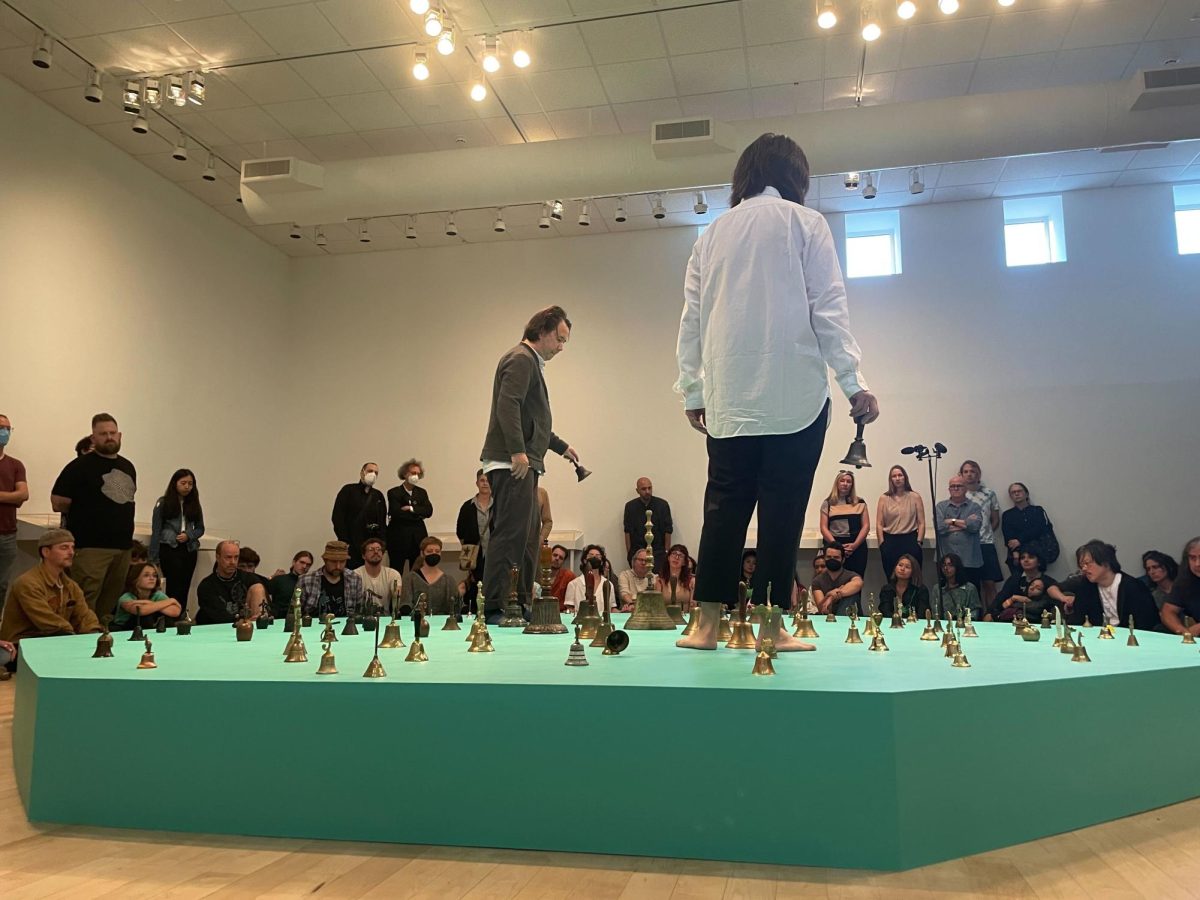Clay microphones, a self-playing piano and a cassette machine playing archival tapes captivated visitors at the “Impossible Music” exhibit at Carnegie Mellon University. The showcase explores musical and artistic creation that transcends the boundaries of what it means to make music.
The exhibit opened at CMU’s Miller Institute for Contemporary Art last Friday. The opening reception on September 29 featured performances by Aki Onda and Conlon Nancarrow. The exhibit will run from September 30 to December 10, featuring work from 10 different composers and artists from the early 20th century to the present day.
“Impossible Music” highlights musical and artistic experimentation and questions the creation of music being exclusively human-centered. Parts of the exhibit use different inanimate objects to create sound and music. Candice Hopkins, co-curator of the exhibit, said the exhibit displays many non-human musicians.
“I would say that one of the things that is special about this exhibition is really questioning that idea of who is emitting the sound, who’s a player, and we actually have a lot of players here who are not human. So that includes red calcite stones, that includes a piano that plays itself and that also includes water,” Hopkins said.
Hopkins said the idea of “Impossible Music” is open to interpretation.
“So that’s how we started organizing this exhibition. It was to ask that question of what is impossible music. So we asked a number of our colleagues,” Hopkins said. “I included other musicians, composers, artists and people came back with different examples of things that they felt were impossible. We had our own ideas and some people thought of it as a very technical question.”
Hopkins said putting the exhibit together with the team at the Miller ICA was a collaborative effort.
“We came up with the idea. We started thinking about different works, talking to people, talking to artists, and other people would suggest other works that we would look at. So we selected the artworks also thinking of how they might be performed in space,” Hopkins said. “We worked with the amazing team at the Miller ICA to place them in the exhibition. And this is a bit of a tricky show, because there’s a lot of sound work.”
One of the performances to commence the opening of the exhibit was Aki Onda’s “Spirits Known and Unknown,” a piece that featured an assortment of brass bells. The performance examined the spirituality of the bells and explored the uncanny and unknown. Aki Onda is an artist and composer currently based in Japan after living in New York for 20 years. His work often explores art, film, music and performance. Onda said he collected the objects used in the performance over a decade.
“I started collecting bells maybe 10 years ago. So over the course of time, they naturally accumulated. But I had this kind of vague idea of showing this and it was about found objects and bells here like 10 years ago. So from the beginning, I kind of envisioned this but this is actually the first time I’ve shown it as an installation,” Onda said.
Onda said the performance wasn’t just about playing bells. For him, the sounds of the bells trigger memories for him and each bell tells a story.
“I hear the sounds through their stories live, you know, each bell has a different story. So it’s not just playing bells,” Onda said. “But you know, thinking about those sounds, somehow triggers those old memories. The bells belong to the past, but when they are played it is within the present.”
Elizabeth Chodos, director of the Miller ICA, said the performance was incredibly moving and evoked a physical reaction for her.
“I’m still really stirred just from that performance. I mean, the sound is just like physically in my body right now. That sound and that work was truly phenomenal,” Chodos said.
Chodos conceived the idea for Impossible Music in 2019 with Hopkins and other curators Raven Chacon and Stavia Grimani. Chodos said the exhibit was originally planned to open in 2021.
“It was supposed to open in March of 2021, but things happened. And so it got delayed. So it was on pause for a little while during the pandemic, this is actually our last exhibition that was planned previous to the pandemic. So it sort of feels like a little bit of closure to that,” Chodos said.
Chodos said the exhibit can serve as an inspiration to challenge conventional definitions of music.
“There’s something about the virtuosity of being able to play something difficult,” Chodos said. “But what happens if you imagine a space of impossible and it’s not, it becomes beyond the reach of human ability and sort of opens up a space for a conceptual space for imagining what that might be.”



